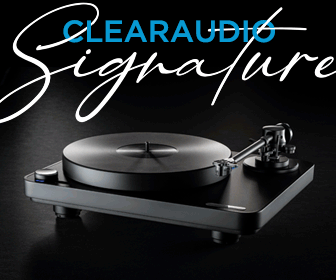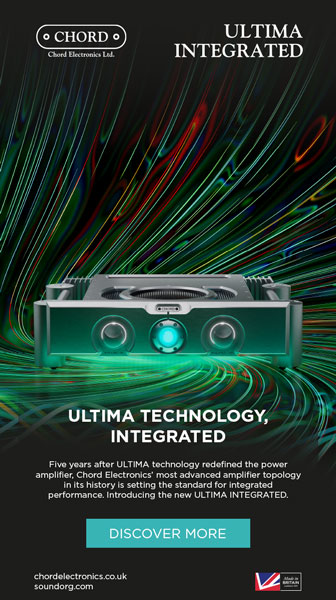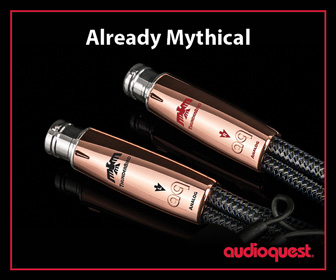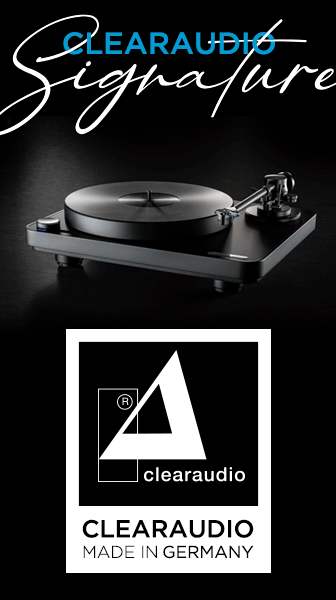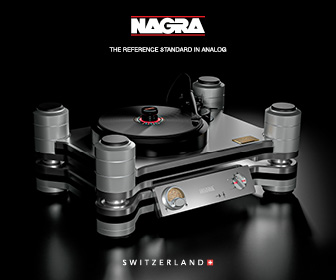Fluance's Top of the Reference Line RT85 Offers Remarkable Value
and impressive performance
It’s no secret that with vinyl once again popular, many well-known brands eager to enter or re-enter the turntable market have them manufactured at the same well-established, highly capable Taiwanese factory using familiar looking parts. It doesn’t take an ”eagle eye” to spot the similarities. Other companies, like Canada-based Fluance.com, once an “upstart” but now well-established, do likewise.
Most of these turntables are not “branding exercises”, in which a company slaps its name on an existing product, but rather the result of a menu-type selection process in which the company and its designers chooses among tonearm, bearing, platter, plinth and other options that add up to the finished turntable. Others bring all new designs to the company, which then custom manufactures to the customer’s specs.
The Fluance RT85
The point of this turntable is to provide buyers with a “plug and play” experience that’s easy to set up and use. For those buying the lower priced models in the Reference series, Fluance offers an upgrade path, for instance from a metal platter to an acrylic one. If you opt for the RT85 you still have the option of later choosing your own cartridge upgrade. Fluance supplies a paper alignment protractor at the back of the instruction manual, though it doesn't specify the particular geometry, which IMO it should. The "S" shaped 8 inch aluminum arm's effective length is spec'd at 224mm, while overhang is 19.2mm.
For the RT85, the topmost turntable in Fluance’s Reference series, the designers chose an acrylic platter fitted with a flat rubber belt riding around its periphery driven by a flanged metal-pulley topped servo-controlled D.C. motor isolated from the plinth via a six point rubber/decoupling isolation ring system.
In the video below, the designer discusses the motor controller system, described as an "eye" that monitors speed five hundred times a second and a "PCB" that does the adjusting should the speed deviate beyond a set point.
As with the protractor, this description is inadequate. An "eye"? Is it an optical sensor? It must somehow be monitoring the spindle rotation because the platter has no reference receptor, nor is the "eye" visible (that I can see). And of course a "PCB" is not adjusting speed. A circuit of some kind mounted on a printed circuit board is. Perhaps the details here are not important or critical to most buyers, but if your'e going to open this can of details, spill them all out on the table!
The arm is a variant of the many produced by this factory, and it appears to have a more massive bearing housing than some. No doubt as with some other brands, bearing quality can be spec'd out and chosen from among different tolerances, but that information isn't provided (or perhaps there are no such options?).
The plug in head shell is found on most if not all arm variations manufactured by this company. Neither VTA/SRA nor azimuth are adjustable, which maximizes rigidity and gives buyers one less thing to think about. The supplied Nagaoka MP-110 moving magnet cartridge , featuring an aluminum alloy cantilever fitted with a 0.4x0.7mil elliptical stylus, outputs 5mV and tracks at 1.5 to 2.0 grams.
A nicely finished in genuine wood veneer plinth sits on three elastomer height adjustable feet and Fluance includes a hinged, smoked plexiglass dust cover. In addition, Fluance includes a 45rpm adapter, a bubble level, a ground wire, a set of RCA to RCA cables and a motor pulley cap. The instruction manual is unusually well organized and informative.
RT85 Set Up and Use
Set-up is quick and easy and should be so even for a novice. Because it's so basic I won't repeat them here other than to say anti-skating is accomplished with a dial indicator not a weight and thread. Easier for a novice. An auto-start/stop function can be activated or turned off via a rear panel mounted switch. Otherwise, even a vinyl "newbie" should have the RT85 unboxed, set up and playing records in a very short period of time—as long as you own a phono preamp. Fluance correctly chose (again IMO) to not build one into the top model in this line, thinking buyers will want to add their own and not want to be paying for a built in one they won't use.
If you use the auto function (and why wouldn't you?), simply select 33 1/3 or 45, put a record on the platter, move the arm over the lead in groove area and the platter will begin to spin at the selected speed. Lower the cueing lever and the music will begin. When the stylus reaches the lead out groove the platter stops.
I let the bearing and cartridge break in for around forty hours and then using the RPM phone app measured speed. Both 33 1/3 and 45 were close to spot on. 33.33 measured 33.2. Using the Shak'n'spin app produced these outstanding results:
The Fluance website shows this blow-up:

A tap on the Stillpoints SS rack top and then again on the plinth itself, with the stylus in the groove (auto on/off disabled) revealed that the feet did a very good isolation impulse type noise from the record surface and that the plinth itself was "lively", producing a relatively deep and long impulse "thump" through the speakers. Ideally you'd want a short "blip" at a higher frequency but again, remember the price here. Oh! Sorry! I've neglected to mention that.
The RT85 costs $499 and that's including the $112 Nagaoka MP-110 cartridge! In other words, Fluance combines aggressive pricing, a generous feature set plus accessories, lifetime customer service, a two year warranty and an ideal instruction manual. How do they do that for $499? Partly it's direct sales on Amazon and other such outlets, avoiding tacking on unnecessary additives like Bluetooth and a headphone amp and probably by pricing with well-shaved margins. More power to them if they can earn sufficient profits to keep this train on the tracks.
RT85 Sound
The Nagaoka cartridge is supposed to deliver a "warm sound" and Fluance describes the acrylic platter as producing warmth and the impulse tap also predicted that kind of sound and lo and behold that's how the RT85 sounded: pleasingly warm. Not hopelessly in the valley or warmth or sluggish and mushy-soft but pleasingly warm.
I'd interviewed Raul Midón at Making Vinyl Nashville in early June and he gave me a few of his albums, one of which is the all instrumental Electric Adventurist (ReKondite Records). Raul is an incredibly versatile guitarist and his musical tastes are boundless, though with a Latin flair.

He's got great players accompanying him here: Jonathan Kreisberg, Alex Cuba, Marvin Sewell, Julia Bailen, Dean Parks, Lionel Loueke, Lindsey Blair, Romero Lubambo and Stephane Wrembel. The playing is remarkable (but it avoids showing off and grandstanding) and the mood buoyant without being annoyingly "bouncy". It's anything but! You're guaranteed to enjoy this, and the sound mastered by Alan F. Silverman (a name familiar to many of you is equally direct, clear and precise).
After playing the record on the Mofi Masterdeck I gave it a spin on the RT85 using the QHW Audio phono preamp, which I'd reviewed for my previous endeavor and the sound was indeed warmer and fuller but still well-controlled with satisfyingly sharp transients and good detail resolution. Image solidity was also fine and the old "rhythm'n'pacing" thing, so important to this kind of music kept the feet tapping and the brain engaged. Plus, backgrounds were quiet.
A real bass test is Davy Spillane's Atlantic Bridge (Tara/Cooking Vinyl 009), with Bela Fleck, Jerry Douglas, and Christy Moore contributing to the title tune. The RT85 did okay here, maintaining reasonably good control, but there was some smear and not the kind of bottom end thunder this record can produce, but what do you expect for $499? Actually I got much more out of this record than I was expecting! And it's doubtful anyone buying this turntable is going to be playing it through Wilson XVX's! But the real takeaway was that there was plenty to enjoy about this tune played back on this turntable and cartridge, especailly side' one's finale, "O'Neill's Statement", a rousing rocker with Albert Lee among the players. Man, this record needs a good reissue! Whatever the RT85 wasn't delivering, I didn't miss it while listening and that's a pretty good
It appears that you can order the RT85 with a choice of cartridges including the Ortofon 2M Blue, which would probably produce a somewhat leaner, but more detailed sound. The direct competition would be Project's $499 T1 Phono SB, which includes a Sumiko Rainier cartridge, and a built-in phono preamp but not an auto start/stop function. A direct comparison would have been interesting but couldn't be arranged in time for this review.
Conclusion
There's nothing to not like about every aspect of the Fluance RT85 turntable. It's attractive looking, pleasant to use, comes with all necessary accessories, it measures well and sounds great, plus the price is more than reasonable. You could probably go pretty high up the cartridge ladder before the RT85 would fall, but most first time buyers will be fully satisfied by how this turntable sounds right out of the box mated with a good phono preamp. It's the kind of analog product that will make new vinyl fans. We're all for that.
Specifications
Drive System | Belt Drive |
|---|---|
Motor | DC Motor with Servo Controller Analyzes motor speed 500 times/sec |
Motor Isolation | Under-mounted 7-point silicone isolation with decoupling isolation ring |
Speed | 33 1/3 RPM, 45 RPM (78 RPM - No) |
Speed Variation | 0.10% |
Wow and Flutter | 0.07% |
Signal-to-Noise Ratio (Weighted) | 76 dB |
Signal-to-Noise Ratio (Unweighted) | 65 dB |
Platter | Acrylic |
Diameter of Platter | 12 inches (30 cm) |
Weight of Platter | 3 lbs (1.56 kg) |
Height of Platter | 0.62 inches (16 mm) |
|---|---|
Auto-Stop | Yes |
Turntable Mat | Not Required |
Tonearm Type | Static Balanced, S-Type |
|---|---|
Supported Cartridge Weight | 0.18 – 0.25 oz (5.0 – 7.5 g) |
Counterweight | Yes – 3.60 oz (102 g) - Adjustable |
Anti-skating Adjustment | Yes – Adjustable |
Pivot Bearing | Yes |
Cueing Lever | Yes |
Tonearm Material | Aluminum |
Tonearm Wire | 36 AWG Litz Cable / 7 Strand |
Effective Tonearm Mass | 0.97 oz (27.5 g) |
Overhang | 0.76 inches (19.2 mm) |
Effective Tonearm Length | 8.82 inches (224 mm) |
Headshell Mount | H-4 Bayonet Mount |







